
Kingdom Hearts III is a 2019 action role-playing game developed and published by Square Enix for the PlayStation 4, Xbox One, Windows, and Nintendo Switch. It is the twelfth installment in the Kingdom Hearts series, and serves as a conclusion of the "Dark Seeker Saga" story arc that began with the original game. Set after the events of Kingdom Hearts 3D: Dream Drop Distance, returning protagonist Sora is joined by Donald Duck, Goofy, King Mickey, and Riku in their search for seven guardians of light as they attempt to thwart Xehanort's plan to bring about a second Keyblade War. Their journey has them cross paths with characters and visit worlds based on different Disney and Pixar intellectual properties.

4A Games Limited is a Ukrainian-Maltese video game developer based in Sliema, Malta. The company was founded in Kyiv, Ukraine, in 2006 by three developers who departed from GSC Game World. In 2014, 4A Games moved its headquarters to Sliema, wherein the Kyiv office was retained as a sub-studio. The company is best known for developing the Metro video game series.

Limbo is a puzzle-platform video game with horror elements developed by independent studio Playdead and originally published by Microsoft Game Studios for the Xbox 360. The game was released in July 2010 on Xbox Live Arcade, and has since been ported by Playdead to several other systems, including the PlayStation 3, Linux and Microsoft Windows. Limbo is a 2D side-scroller, incorporating a physics system that governs environmental objects and the player character. The player guides an unnamed boy through dangerous environments and traps as he searches for his sister. The developer built the game's puzzles expecting the player to fail before finding the correct solution. Playdead called the style of play "trial and death", and used gruesome imagery for the boy's deaths to steer the player from unworkable solutions.
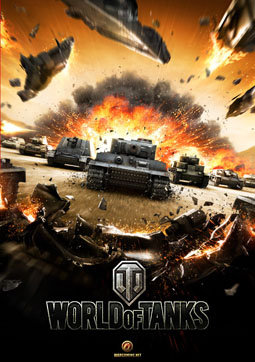
World of Tanks (WoT) is an armoured warfare-themed multiplayer online game developed by Wargaming, featuring 20th century (1910s–1970s) era combat vehicles. It is built upon a freemium business model where the game is free-to-play, but participants also have the option of paying a fee for use of "premium" features. The focus is on player vs. player gameplay with each player controlling an armored vehicle, from the time of Pre-World War 2 to the Cold War-era.
Playdead ApS is a Danish independent video game developer based in Copenhagen. Game designers Arnt Jensen and Dino Patti created the company in 2006 to develop Limbo, which was released in 2010 to critical acclaim. After a year of Xbox 360 exclusivity, Playdead released ports of the game to PlayStation 3, Microsoft Windows, macOS, iOS and Android.
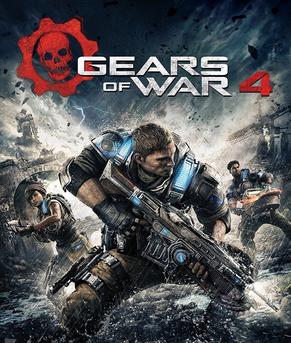
Gears of War 4 is a 2016 third-person shooter video game developed by The Coalition and published by Microsoft Studios for Windows and Xbox One. It is the fourth main installment in the Gears of War series, and the first mainline entry not to be developed by Epic Games. The game was released worldwide on October 11, 2016. The sequel, Gears 5, was released on September 10, 2019.
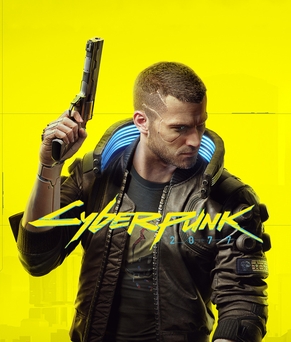
Cyberpunk 2077 is a 2020 action role-playing video game developed by CD Projekt Red, and published by CD Projekt, and based on Mike Pondsmith's Cyberpunk tabletop game series. The plot is set in the fictional metropolis of Night City, California, within the dystopian Cyberpunk universe. The player assumes the role of V, a mercenary who accidentally gets imbued with a cybernetic "bio-chip" containing an engram of legendary rockstar and terrorist Johnny Silverhand. As Johnny’s behavioral template and memories begin overwriting V’s own, the two must work together to separate from each other and save V's life.
2017 saw the release of numerous video games as well as other developments in the video game industry. The Nintendo Switch console was released in 2017, which sold more than 14 million units by the end of the year, exceeding the under-performing Wii U lifetime sales. This has helped to revitalize Nintendo, with the "retro" Super NES Classic Edition console, the refreshed New Nintendo 2DS XL handheld and a strategy for mobile gaming. Microsoft also released the higher-powered Xbox One X targeted for 4K resolutions and virtual reality support.
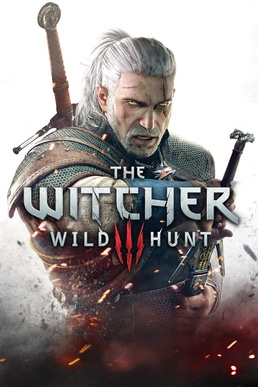
The Witcher 3: Wild Hunt is a 2015 action role-playing game developed and published by CD Projekt. It is the sequel to the 2011 game The Witcher 2: Assassins of Kings and the third game in The Witcher video game series, played in an open world with a third-person perspective. The games follow the Witcher series of fantasy novels written by Andrzej Sapkowski.

140 is a platform game developed and published by Carlsen Games. It was directed by Jeppe Carlsen, who previously worked on Playdead's Limbo. The game is described as a "minimalistic platformer", using electronic music to create synesthesia as the player makes their way through four different levels, each with its own sound-track. Its gameplay has been compared to other similar games which involve music synchronization like Sound Shapes and the Bit.Trip series, though with difficult platforming elements comparable to games in the Mega Man series. The game was released on Microsoft Windows, OS X, and Linux systems in October 2013, on Xbox One in August 2016, on PlayStation 4, Wii U in September 2016, and Nintendo Switch in January 2020. A release on PlayStation Vita and Nintendo 3DS was planned, but later cancelled.

Below is an action-adventure game developed by Capybara Games. The game was announced during Microsoft's E3 2013 press event, and was indefinitely delayed in 2016. It initially released on Microsoft Windows and Xbox One on December 14, 2018, with a PS4 port released in 2020. The game received mixed reviews upon release.

Fallout 4 is a 2015 action role-playing game developed by Bethesda Game Studios and published by Bethesda Softworks. It is the fourth main game in the Fallout series and was released worldwide on November 10, 2015, for PlayStation 4, Windows, and Xbox One. The game is set within an open world post-apocalyptic environment that encompasses the city of Boston and the surrounding Massachusetts region known as "The Commonwealth".

Cuphead is a 2017 run and gun game developed and published by Studio MDHR. The game follows its titular teacup-headed character who makes a deal with the Devil to pay casino losses by repossessing the souls of runaway debtors. In the game, up to two players control Cuphead and/or his brother Mugman to fight through several levels and boss fights; the game does not have a rigid narrative structure. As the game progresses, the protagonist acquires more power and abilities, eventually facing the Devil himself. Players, however, can only equip a limited number of these abilities at a given time.

Life Is Strange is an episodic adventure game developed by Dontnod Entertainment and published by Square Enix. The first installment of the Life Is Strange series, the game was released in five episodes periodically throughout 2015 for PlayStation 3, PlayStation 4, Windows, Xbox 360, and Xbox One. It was ported to OS X and Linux in 2016, and iOS and Android in 2017–2018.
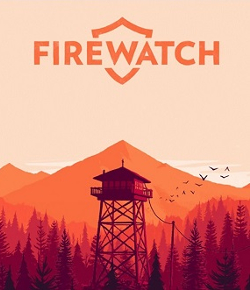
Firewatch is an adventure game developed by Campo Santo and published by the developer in partnership with Panic. The game was released in February 2016 for Linux, OS X, PlayStation 4, Windows, and Xbox One in September 2016, and for Nintendo Switch in December 2018. The story follows a fire lookout named Henry who works in Shoshone National Forest. Henry interacts with his supervisor Delilah using a walkie-talkie, with the player choosing from dialog options to communicate. His exchanges with Delilah inform the process by which their relationship is developed. Over the course of the summer, Henry and Delilah appear to be menaced by unseen forces and have to unravel a years-old mystery.
Dark Souls is a dark fantasy action role-playing game series developed by FromSoftware and published by Bandai Namco Entertainment. It began with the release of Dark Souls (2011) and has seen two sequels, Dark Souls II (2014) and Dark Souls III (2016). The series was created by Hidetaka Miyazaki and has received critical acclaim, with its high level of difficulty being among its most discussed aspects, while the first Dark Souls is often cited as one of the greatest games of all time. By 2023, the series had shipped over 35 million copies outside of Japan. Other FromSoftware games, including Demon's Souls, Bloodborne, Sekiro: Shadows Die Twice, and Elden Ring, share several related concepts and led to the creation of the Soulslike subgenre.

The Electronic Entertainment Expo 2016 was the 22nd E3, during which several hardware manufacturers and software developers and publishers from the video game industry presented new and upcoming products to the attendees, primarily retailers and members of the video game press. The event, organized by the Entertainment Software Association, took place at the Los Angeles Convention Center from June 14–16, 2016. Approximately 50,300 people attended the event, slightly down from the previous year's. With video game consoles currently a couple years into their 8th generation, the focus of E3 2016 was primarily on new software titles, with new hardware revisions and auxiliary equipment to support the growing market sectors of 4K resolution displays and virtual reality headsets.

Overcooked is a 2016 cooking simulation video game developed by Ghost Town Games and published by Team17. In a local cooperative experience, players control a number of chefs in kitchens filled with various obstacles and hazards to rapidly prepare meals to specific orders under a time limit. The game was released for PlayStation 4, Windows, and Xbox One in August 2016. A Nintendo Switch version was released in July 2017.

The Electronic Entertainment Expo 2017 was the 23rd E3, during which hardware manufacturers and software developers and publishers from the video game industry presented new and upcoming products to the attendees, primarily retailers and members of the video game press. The event, organized by the Entertainment Software Association (ESA), took place at the Los Angeles Convention Center from June 13–15, 2017. It was the first E3 to allow public access to the event, and as a result, the total attendance was about 68,400 which included 15,000 in public passes.
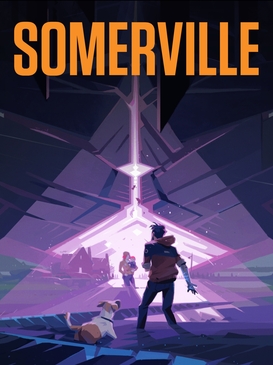
Somerville is an adventure video game and the debut title by the independent studio Jumpship. The studio's co-founder, Dino Patti, previously co-founded Playdead and worked on Limbo and Inside as executive producer on both games. The game was released on Microsoft Windows, Xbox One, and Xbox Series X/S on November 15, 2022. It was released for PlayStation 4 and PlayStation 5 on August 31, 2023. It received mixed reviews upon release.


















